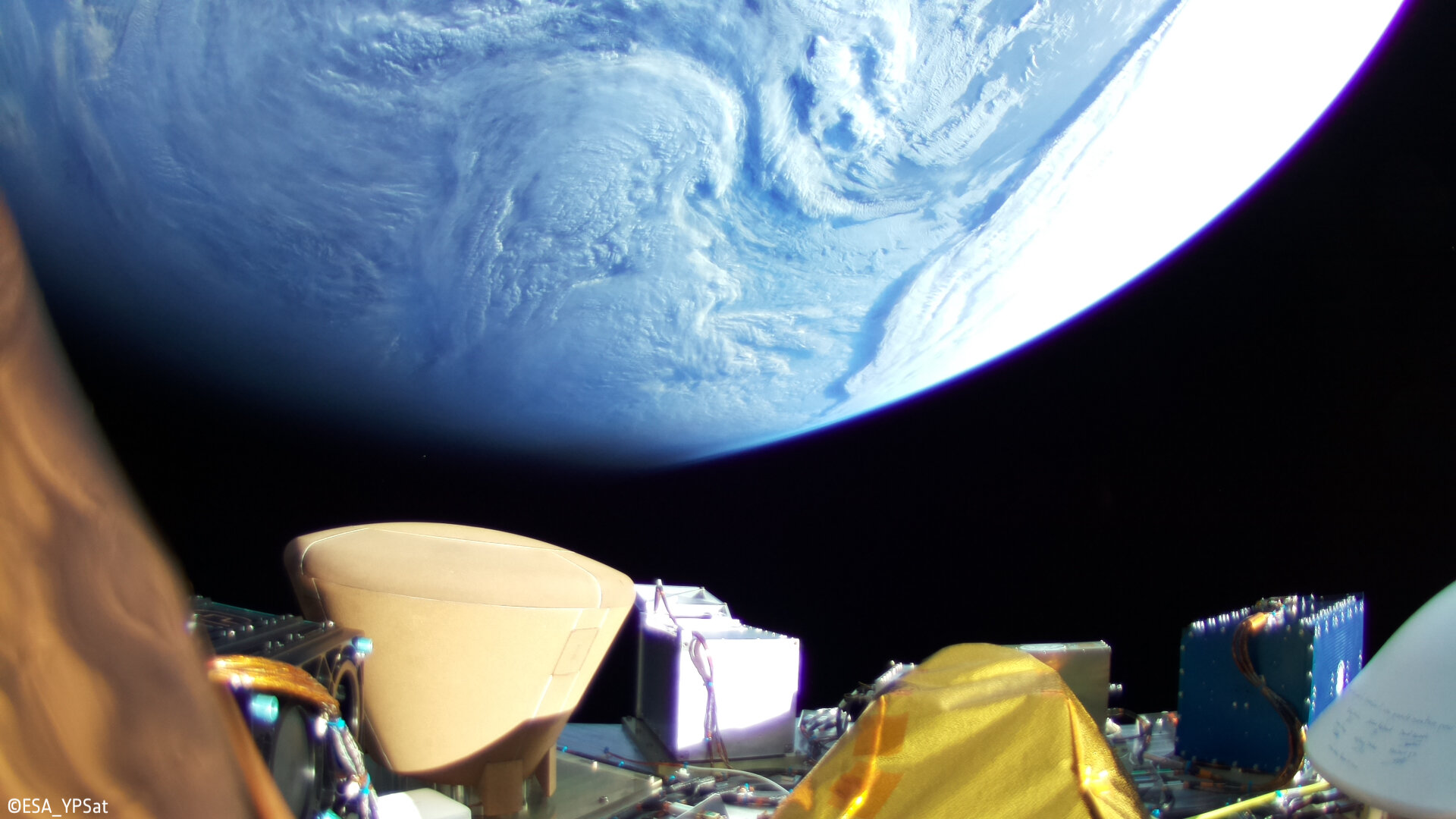11/07/2024
2176 views
17 likes
If there had been an astronaut aboard the historic first launch of Europe’s Ariane 6 launcher, this is what they would have seen: images and videos from key phases of the flight were captured by the YPSat payload, a project led and undertaken by ESA Young Professionals in their own time.
Attached to the launcher’s upper stage, YPSat served as a crucial witness throughout the test flight. The payload then transmitted its stored images and data back to Earth, providing invaluable insights into Ariane 6’s performance.
Key flight phases that were imaged include Ariane 6’s fairing separation, the deployment of its CubeSats and in-orbit views of Earth and space.
The compact payload combined optical cameras with an innovative quantum-based sensor to record variations in Earth’s magnetic field along the direction of flight as well as an amateur radio experiment allowing ham radio enthusiasts to get in touch with YPSat.
YPSat also included systems to wake it up before launch and transmit its data to waiting ground stations.
Most satellites only need to wake up once in orbit, but as YPSat recorded the separation of the fairing it needed the recorder needed to be switched on before, the novel vibration-sensing system worked perfectly and switched the device on moments after liftoff.
From dream to reality
The YPSat project represents the culmination of about two and a half years of dedication and hard work core team of about 30 Young Professionals from various ESA Establishments, Directorates and disciplines. Sacrificing their spare time, they shouldered the entire responsibility of designing, building and testing the payload before finally witnessing its successful launch.
Dietmar Pilz, ESA Director of Technology, Engineering and Quality comments: “The success of YPSat is a testament to the immense potential and talents we have within ESA. It paves the way for future generations to play a leading role in shaping Europe’s space endeavours.”

